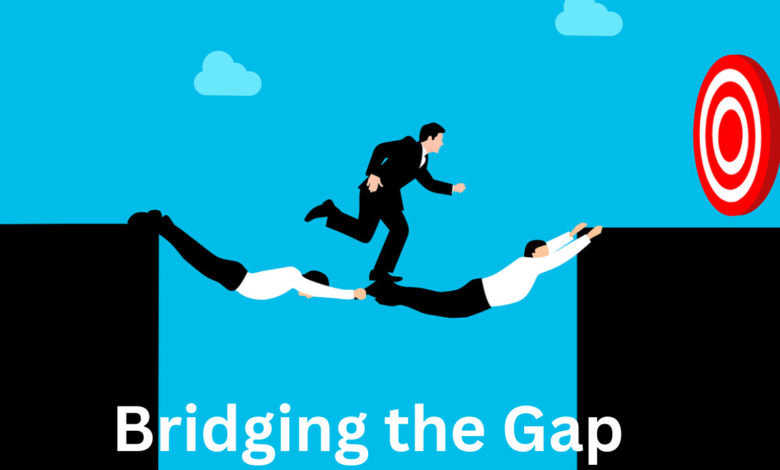Bridging the Gap: A Comprehensive Guide to Connecting Ideas, People, and Opportunities

In our fast-changing world, the phrase Bridging the Gap carries more weight than ever before. Whether it’s in technology, education, relationships, or global cooperation, finding ways to connect two separate points is often the key to progress. But what does Bridging the Gap truly mean? And how can it be applied in real-world scenarios to bring lasting change?
This detailed guide will explore the many dimensions of Bridging the Gap, highlight its benefits, and provide practical steps for making it happen in your life, community, or organization.
Understanding the Concept of Bridging the Gap
At its core, Bridging the Gap is about creating a link between two areas that otherwise remain disconnected. This could be a communication gap, a skill gap, a generational gap, or even a gap in understanding between two cultures. The goal is to make interaction and cooperation possible where it was once difficult or impossible.
Why Bridging the Gap Matters
In business, Bridging the Gap can mean transforming a struggling team into a high-performing one. In education, it can be the difference between a student falling behind or catching up. In technology, it can mean giving underserved communities access to tools that open new possibilities.
When we focus on Bridging the Gap, we’re not just connecting two points—we’re building pathways for growth, innovation, and shared success.
Types of Gaps That Need Bridging
Skill Gaps
Workplaces often struggle with employees lacking certain abilities. Bridging the Gap here means offering targeted training and mentoring programs.
Communication Gaps
Misunderstandings can harm productivity and relationships. Bridging the Gap might involve clearer language, better listening, and more open dialogue.
Cultural Gaps
In an interconnected world, different cultural backgrounds sometimes clash. Bridging the Gap means finding common values and mutual respect.
Technology Gaps
Not everyone has access to the same digital tools. Bridging the Gap could be about providing affordable devices and internet access.
Choosing Between Bridging the Gap and Ignoring the Problem
There’s always a choice: address the gap or leave it unaddressed. Choosing to ignore it often allows small problems to grow into major issues. Choosing Bridging the Gap means actively seeking solutions and fostering unity.
Key Benefits of Bridging the Gap
Improved Collaboration
When people understand each other better, they can work together more effectively. Bridging the Gap removes the barriers to teamwork.
Greater Inclusivity
By Bridging the Gap, more voices get heard, and diverse perspectives lead to richer ideas and outcomes.
Faster Problem-Solving
Connected teams and communities can respond to challenges quickly because the channels of communication are already open.
Challenges in Bridging the Gap
Even with the best intentions, Bridging the Gap can be difficult. Resistance to change, lack of resources, and deeply rooted differences can slow the process. However, with persistence and creativity, these challenges can be overcome.
Practical Strategies for Bridging the Gap
1. Identify the Gap Clearly
Before starting, define exactly what needs connecting. Is it knowledge, communication, or resources? This makes Bridging the Gap more targeted.
2. Create a Plan of Action
A vague desire to connect is not enough. Bridging the Gap requires specific steps, timelines, and responsibilities.
3. Involve Stakeholders
Whether in a company, school, or community, involve all relevant parties. Bridging the Gap is a shared effort.
4. Use Technology Wisely
Digital tools can make Bridging the Gap faster and more efficient, especially for remote teams.
5. Monitor and Adjust
Once progress begins, measure it. If results aren’t as expected, adjust your approach to ensure Bridging the Gap succeeds.
Bridging the Gap in Education
In classrooms, Bridging the Gap might mean offering tutoring for struggling students or using creative teaching methods to reach different learning styles. Technology can also help teachers connect with students in new and effective ways.
Bridging the Gap in Business
In organizations, Bridging the Gap often focuses on aligning leadership goals with employee needs. When both sides understand each other, productivity increases, and workplace satisfaction grows.
Bridging the Gap in Communities
Local projects that bring people together—such as neighborhood events or volunteer programs—are examples of Bridging the Gap at a community level. These efforts strengthen trust and cooperation.

The Role of Leadership in Bridging the Gap
Leaders play a central role in Bridging the Gap by setting the tone, encouraging openness, and ensuring everyone feels valued. A leader who listens actively and responds thoughtfully can unite even the most divided teams.
Long-Term Impact of Bridging the Gap
Once a gap is bridged, the positive effects often multiply. Relationships improve, opportunities increase, and future gaps are easier to address because trust has been built. This is the lasting power of Bridging the Gap.
Future Trends in Bridging the Gap
With technology evolving rapidly, future Bridging the Gap efforts will likely focus on digital literacy, AI integration, and global collaboration. The world will need more connectors—people and tools that make bridging easier than ever before.
Conclusion
Bridging the Gap isn’t just a phrase—it’s a powerful approach to solving problems, uniting people, and creating progress. Whether in your workplace, school, or neighborhood, choosing to bridge the gap rather than ignore it leads to lasting benefits.
The more we commit to Bridging the Gap, the closer we get to a world where understanding and cooperation replace division and misunderstanding.
FAQs
- What does Bridging the Gap mean?
It means connecting two separate points—whether ideas, people, or resources—to create understanding and cooperation. - Why is Bridging the Gap important?
It removes barriers, improves relationships, and opens opportunities. - Can technology help in Bridging the Gap?
Yes, digital tools often make connections faster and more effective. - What is the biggest challenge in Bridging the Gap?
Resistance to change and lack of resources are common obstacles. - How can I start Bridging the Gap in my community?
Begin with open dialogue, involve key stakeholders, and work toward shared goals.
Keep an eye for more news & updates on Evolant Agency!




